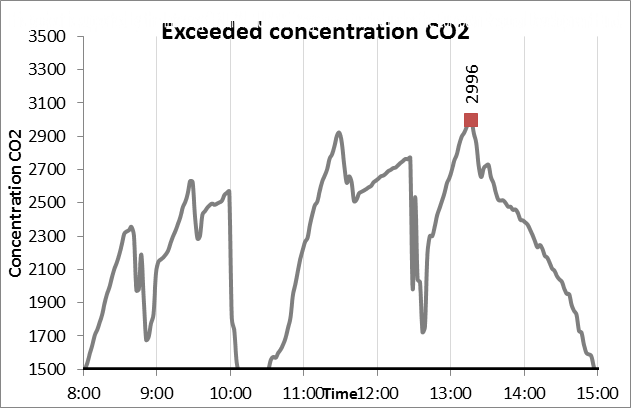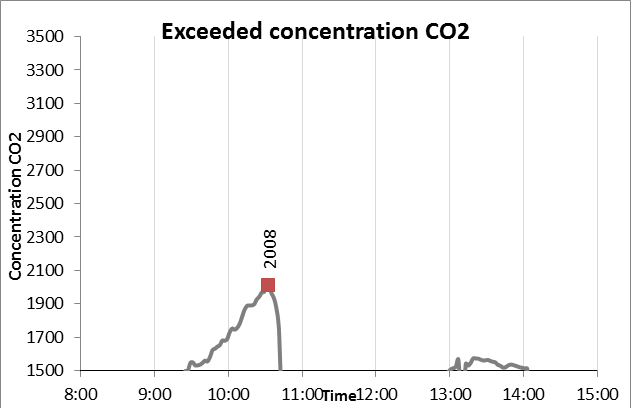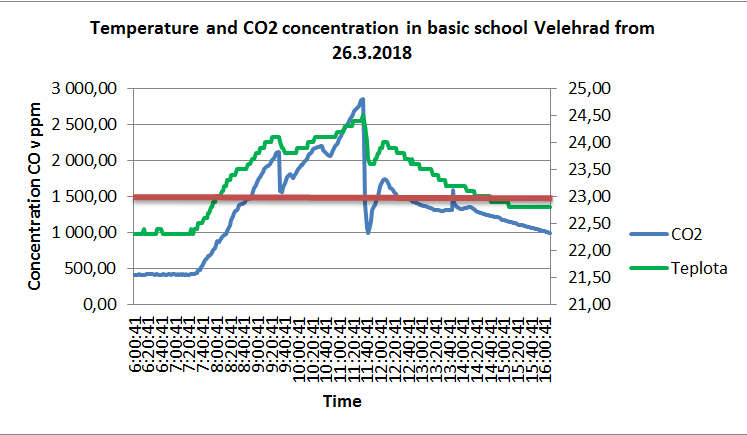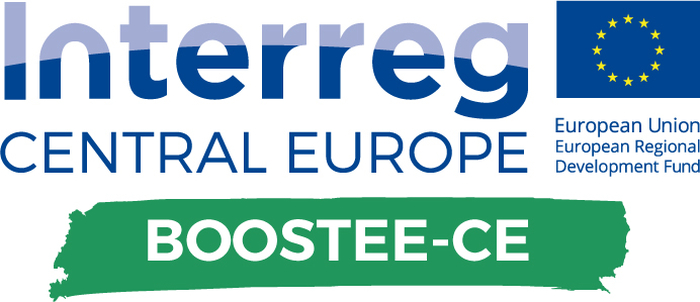7. 11. 2018
Measurement of the indoor environment in the school buildings of the Zlín Region involved in Interreg Central Europe project BOOSTEE-CE
Project BOOSTEE-CE (Boosting Energy Efficiency in Central European Cities through Smart Energy Management) aims to increase energy efficiency in public buildings. Several tools are used to achieve this goal: geospatial data to produce 3D building models in order visualize energy consumption, heat losses and PV potential; smart energy management tools and smart metering via pilot actions; energy audits. 13 project partners from 7 countries work together to deliver the pilot actions and our final product: the OnePlace platform, which will help those who seek to educate themselves on how to improve EE.
The school buildings, which are involved in measuring the quality of the indoor environment in the Zlín Region, are Grammar School L. Jaroše Holešov, Masaryk grammar school and medical high school Vsetin, Higher Vocational School of Pedagogy and Secondary School of Pedagogy Kroměříž and Elementary School 1. Máje Kroměříž. The environment of classrooms was measured in all these schools for more than a year (temperature, relative humidity and CO2 concentration).
These buildings are not only measured the indoor environment but we also educated teachers to be able to properly ventilate and care for a suitable environment in the classroom during the lessons. The results of inappropriate ventilation are fatigue, lack of concentration, decreased performance, headache and eye burning. The exhaled air has approximately 40,000 ppm of CO2, the maximum recommended for the classrooms is 1500 ppm. The number of children in the classroom has significant effect on the increasing of the concentration of CO2. Our experience is that approximately 15 minutes from the start of the lesson the classroom needs to be ventilated.
By long-term measurements it has been found that if the teachers are not trained and do not take care of the indoor environment, the CO2 concentration reaches up ordinarily to 3000 ppm.
Example of CO2 measurement from 8.1.2018 concentrations before introducing the ventilation system (values above 1500 ppm):

Example of CO2 measurement form 22.1.2018 concentrations after introduction of the ventilation system (values above 1500 ppm):

You can see on the graphs that by proper ventilation is possible to avoid the unpleasant environment for children in the most school buildings.
The Energy Agency of the Zlín region monitor currently all of the above mentioned schools, moreover monitor the effect of ventilation on energy consumption and evaluating the energy savings generated by changing the windows and insulating the ceilings or the fasade of these historic buildings within the subsidy Program. Based on energy management, there are savings of 5-10%.
Further, long-term measurements have shown that, if a building built in 1990, where double-glazed windows are already leaking, CO2 values are still exceeded, and heat consumption for heating is much higher than was projected (see picture below).

Interreg Central Europe Program, which promotes cross-border cooperation by supporting public and private organizations in co-operation with common challenges such as increasing energy efficiency and use of renewable energy in the public infrastructure sector.
This project is supported by the Interreg CENTRAL EUROPE Programme funded under the European Regional Development Fund.


